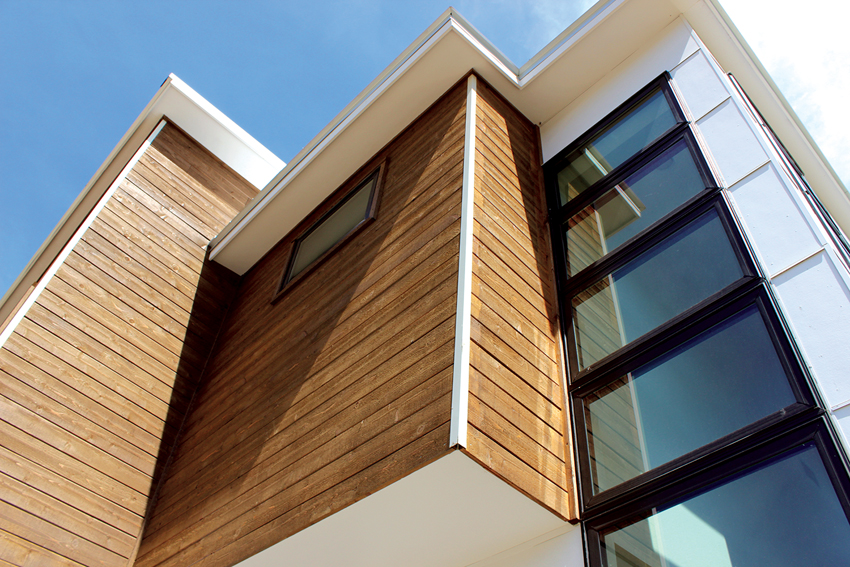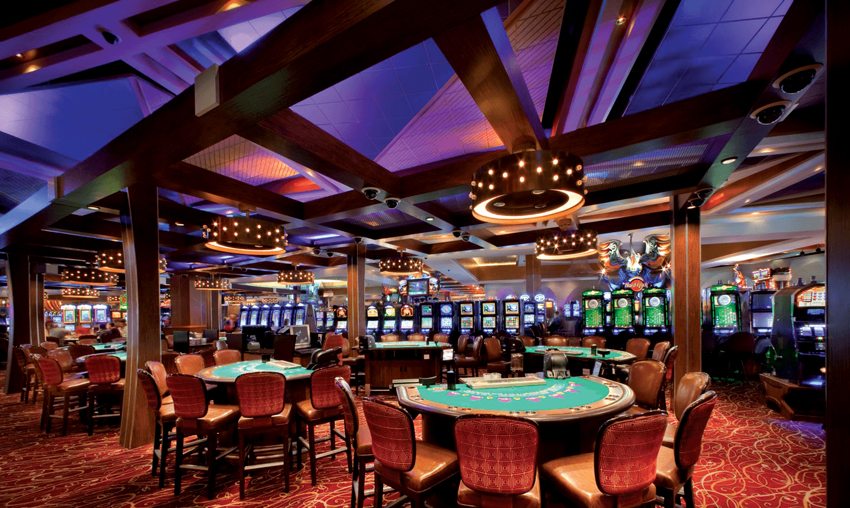Extruded Aluminum Shines in Multifamily and Commercial Building Projects
Anodized Finishes
Anodizing is an electrochemical process that changes a metal’s surface into an anodic oxide finish that is decorative, durable, and corrosion resistant. The process is accomplished by dipping aluminum into an acid electrolyte bath and passing an electric current through the medium. The process allows aluminum oxide to fully integrate into the substrate of the product. Anodizing helps guard against corrosion but does not increase the strength of the aluminum itself.
The result of anodizing is a decorative, dynamic, and shiny surface. Especially if the goal is to sport a metallic look, anodizing is one approach that provides that style in an elegant manner.
The process creates a more porous surface, which is great for making dyes last longer if a color is applied afterward. The dye is locked in, integrated as part of the aluminum itself, and will not peel or fade with sunlight.

In recent years, some companies have started to skip the traditional anodizing process for powder-coat finishes with an anodized sheen in colors such as dark bronze or black.
Skipping the Dip
In recent years, some companies have started to skip the traditional anodizing process for finishing. Instead, they use a powder coating that has anodized sheen and is applied more quickly and easily than the process of anodizing requires. The coating is available in colors such as dark bronze, medium bronze, light bronze, gold, and black, which are within the industry range of color consistency but can vary from product to product depending on needs.
There are many advantages to skipping the dip, including the fact that the anodized coating allows for more consistency in color across product lines. It also has other cost and time advantages for both the manufacturer and the customer, which we will discuss in the next section.
Extruded Aluminum Cost and Lead-Time Advantages
Cost is a major factor for any project. In addition, lead time is an issue that plagues manufacturers, whether they are up against a pandemic or not. This section will talk about how new finishing technology for extruded aluminum can save money and time and also provide better quality control.

Aluminum offers many possibilities for light fixtures, such as these low-maintenance but aesthetically pleasing lights hanging in a Hard Rock Cafe.
Skipping the Dip
The lead time for anodizing extruded aluminum products can be up to four weeks depending on if you are using an outside or in-house anodizer. It takes about 720 amp minutes per square foot to produce 1 mil of oxide, so even in-house, the process can hold up a product line for a significant amount of time.
Those who are wanting small batches of finished extruded aluminum product are sometimes out of luck if a process requires large batches. Minimum order quantities (MOQs) often are an unexpected and significant expense to a buyer. And if the extra product is not used, it is also a waste of material with a negative impact on the environment.
Even if a buyer will eventually want a large batch, it is often the case that a buyer is looking to order a small batch first as a way to sample the product.
It might seem like manufacturers are just trying to keep orders big to make more money, but the truth is that small batches cost the manufacturer more due to economic and technical reasons. The preparation, manpower, and time required ends up outweighing the benefits when so much overhead is put toward small batches in a high-production setting or process.
Therefore, skipping the anodizing process and using anodized color powder coating can cut back on lead time. It also removes minimum order barriers since the coating process does not need to happen in large batches like it does with anodizing.
Other In-House Advantages
Extruded aluminum products that can be finished in-house allow manufacturers to cut down on expenses and pass those savings onto the buyer. Transportation and other middleman expenses can be cut out, and communication between manufacturer and buyer is not as apt to breakdown.
It also means that the soup-to-nuts process is overseen by one company, and this can lead to better quality control. The flow of quality-control checks can take place in one setting with a system in place that can ensure a product meets standards from the moment it is cast through the finishing process and into the hands of the buyer.
Extruded Aluminum and Its Real-World Applications
Extruded aluminum has many real-world applications, and these applications have expanded in recent years. The material is popular because its versatility in both shape and color can be integrated into a multitude of building products, including drywall, light fixtures, acoustic ceilings, and millwork.
In this final section, we will explore how extruded aluminum advances the quality of everyday products and describe the mechanical properties of these real-world products.
Drywall
Interior drywall surfaces in multifamily residential projects can easily and affordably be enhanced with extruded aluminum trim, which can turn the surface into a feature or focal point and drastically transform the space. Where custom metalwork is costly to design, detail, and fabricate, extruded aluminum trim can present a similar look at a fraction of the cost. As a design feature, aluminum trim can provide architects and designers with a means for creating clean, modern designs while incorporating the sustainable features and performance characteristics of aluminum.









